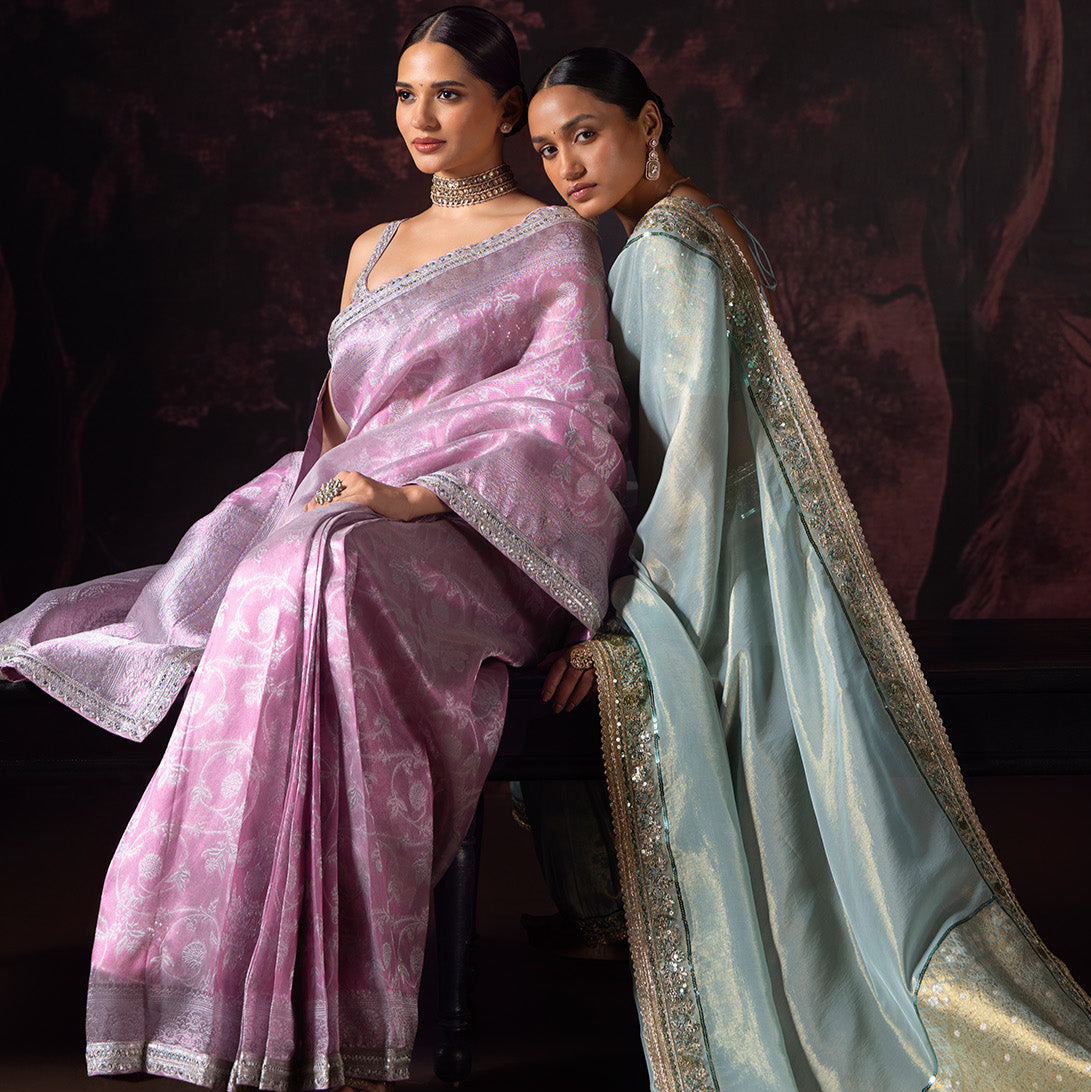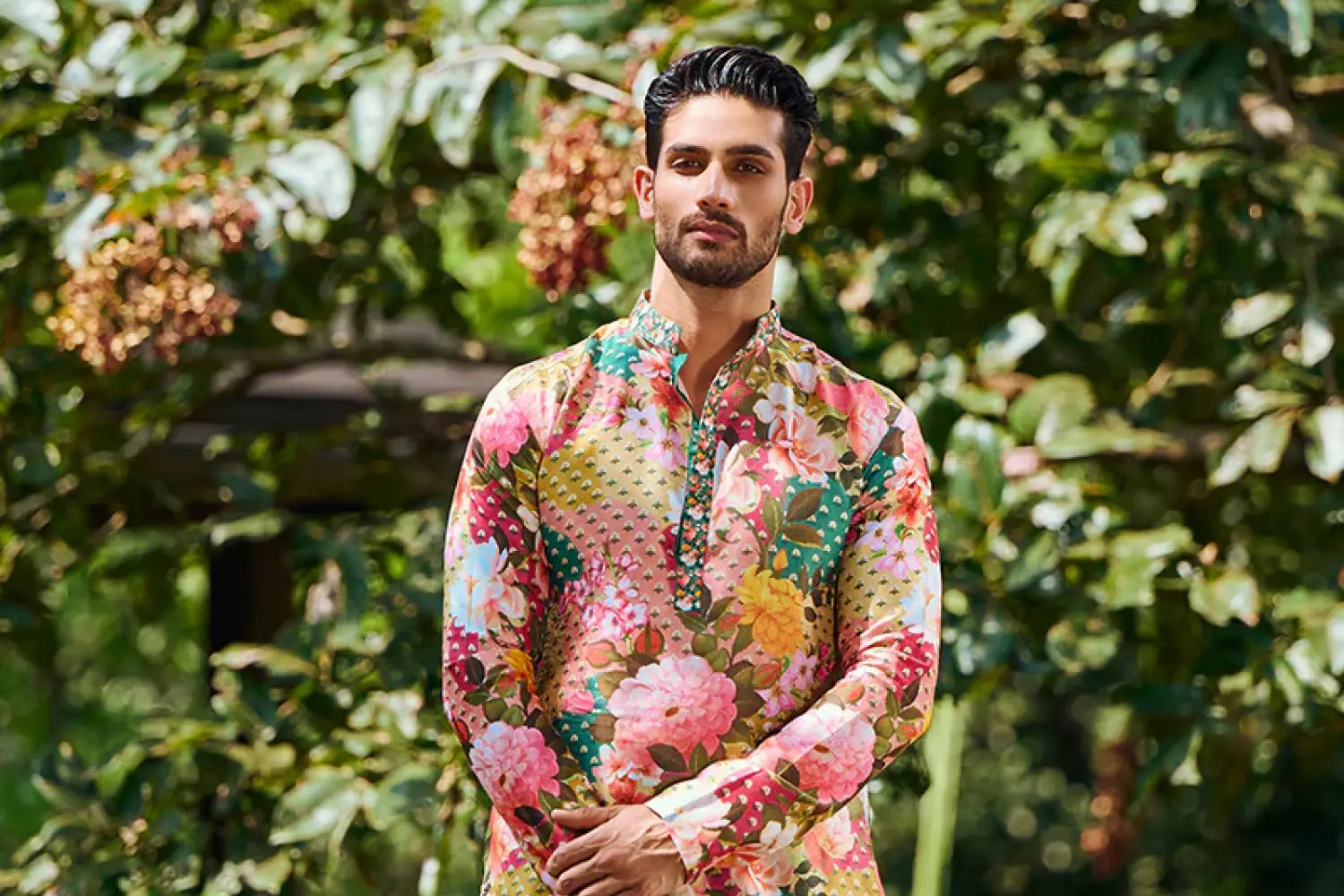
The Art of Handloom: What is it?
In India, the handloom is one of the most significant homegrown industries, giving livelihood to most of rural India. Indian handicrafts have captivated the world and yet remain rooted to their culture and ethos. Handloom refers to a traditional method of weaving where the entire process, from setting up the warp and weft to weaving the fabric, is done by hand. This technique predates the industrial revolution and is still used in many parts of the world, especially in countries with rich textile traditions like India.
The Essence of Hand Loom Weaving
Adopting handloom products in fashion is not only about safeguarding traditions but also about owning something that is home grown. Globally, luxury is primarily about that which is not produced in factories but made by human hands and is organic deeming handloom products to be more luxurious than other products. The art of handloom constitutes key aspects like handloom weaving, where the weaver manually interlaces the warp (lengthwise threads) and weft (crosswise threads) to create fabric. This is in contrast to power loom weaving, where machines automate much of the process. Handloom also allows for great flexibility, enabling the creation of a wide range of fabrics, from lightweight cotton to rich silks and wool.
Handloom allows for great flexibility, enabling the creation of a wide range of fabrics, from lightweight cotton to rich silks and woolen. These handloom textiles are known for their intricate designs and patterns, showcasing the artistic skills of the weavers. Many traditional motifs and styles are specific to certain communities or geographical locations. Given the geographical diversity of India, different states and regions in India have their own distinct handloom traditions. For instance, Banarasi silk from Uttar Pradesh, Kanjeevaram silk from Tamil Nadu, and Ikat from various regions including Odisha and Gujarat.
Handloom textiles have a global appeal as Indian exports, with their unique designs and craftsmanship, have gained popularity in the global market. They are valued for their authenticity and connection to cultural traditions. While handloom weaving faces challenges, including competition from power looms and changing market demands, there is a growing awareness and appreciation for the art of handloom.
Understanding Handloom Fabric: A Thorough Insight
Handloom is a term that conjures images of exhibitions in dilapidated museums, artisans at work in dimly-lit factories, and stiff sarees worn by heads of state. But in 2023, the word means more. Most handloom fabrics are made using natural fibres, which feel significantly better against one’s skin as they are processed with lesser chemicals. In some cases, they are grown organically without any use of chemicals and are easily biodegradable, thereby being eco-friendly fabrics that put less pressure on the environment. The body also tends to breathe easier in handloom fabrics.
The handloom industry involves a community that has been practicing an artisanal skill or technique for generations, where each person has a specific role and contribution. Investing in handloom means doing your bit in preserving a traditional craft and supporting an artisanal community. This also means that the tag on something handmade is always followed by a few zeros. Generally speaking, handloom fabrics tend to be more expensive than the synthetic mill counterparts owing to the hand labour involved and limited production capacity when compared with power looms. However, not all handlooms are expensive, and it totally depends on the fabrics or the yarns being used. Sometimes, it also depends on which region the handlooms are coming from, as techniques of weaving differ from place to place.
Handloom Dresses: A Blend of Tradition and Modern Fashion
Handloom dresses are a beautiful embodiment of traditional weaving techniques seamlessly blended with modern fashion aesthetics. These dresses showcase the rich cultural heritage and skilled craftsmanship of handloom weavers while offering contemporary styles that appeal to the modern wearer. For the new-age handloom dresses are a delightful fusion of tradition and modernity. With intricate weaves and cultural stories, these dresses offer wearers a chance to connect with India’s rich textile heritage. The fusion of tradition and modernity in these dresses creates a timeless appeal that resonates with those who appreciate both the artistry of the past and the innovations of the present.
These handloom dresses may be crafted using time-honored weaving techniques that have been passed down through generations. The manual weaving process adds a touch of authenticity and uniqueness to each dress. Many handloom dresses are even inspired by the weaving traditions of specific regions in India. Each region has its own distinctive weaving style, motifs, and patterns, reflecting the cultural diversity of the country. Ranging from a wide variety of fabric usage like cotton and handloom silk such as Banarasi silk or Kanjeevaram silk, to intricate motifs and designs that hold cultural significance, the beauty of handloom and its confluence with western silhouettes is unmatched.
While handlooms encapsulate the essence of timeless Indian craftsmanship, there are also contemporary alternatives that echo a similar spirit of tradition and modernity. From Lashkaraa, the Dusty Purple Net Anarkali, Soft Pink Floral Embellished Saree, and White Embroidered Lehenga masterfully combine traditional design elements with today's fashion trends. Each piece, while not handwoven, celebrates the cultural essence in its unique way, standing as a testament to India's diverse fashion narrative.
The Resurgence and Evolution of Handloom
While the art of handloom remains the same, its adaptations have evolved. Further, choosing handloom dresses contributes to sustainable and ethical fashion as it empowers artisans and supports the livelihoods of handloom weavers. With the continuation of these traditional skills, some brands and initiatives focus on fair trade practices, ensuring that artisans receive fair compensation for their work. Over time, global fashion brands have really added to the weightage of handloom textiles, a unique combination of craftsmanship and contemporary design.
Many handloom dresses can be customized to suit individual preferences. This allows wearers to choose specific weaves, colors, and patterns, creating a personalized garment. Handloom dresses, with their intricate weaves and cultural stories, offer wearers a chance to connect with India's rich textile heritage. The fusion of tradition and modernity in these dresses creates a timeless appeal that resonates with those who appreciate both the artistry of the past and the innovations of the present.














